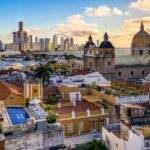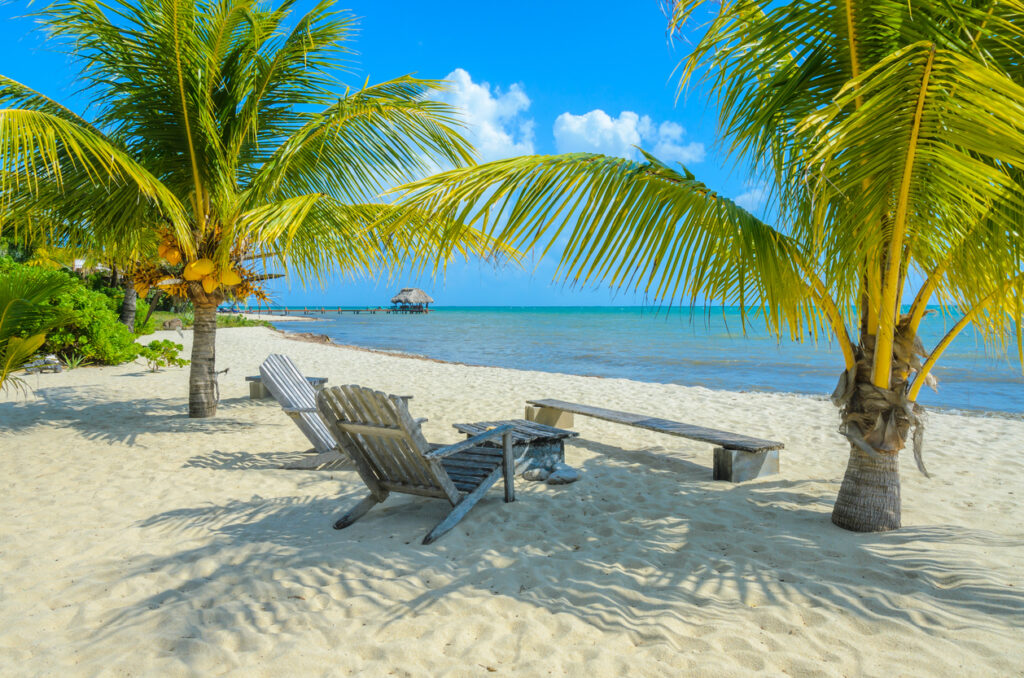As retirement nears, priorities such as quality of life and affordability factor heavily into decisions regarding where to retire, leading to researching the best place to retire in South America.
South American countries feature prominently on the list of possible places to retire due to their affordability, the quality of healthcare in certain countries, and the number of expat retirees already there.
Below, we’ve researched some of the best places to retire in South America, digging into the finer details of cities such as Mendoza, Argentina, and Cuenca, Ecuador, to help you make your final decision.
While there are many considerations to take into account when considering international living, many cities in South America provide US expats with an incredible opportunity to live comfortably and enjoy a quality of life that may be out of reach for them within the United States.
Let’s dig in and explore some great options!
📋 Key Insights for Retiring in South America in 2025
- Many South American countries, including Ecuador and Argentina, have adjusted their income thresholds for retirement visa eligibility. Ensure you meet the new standards before applying.
- Colombia and Uruguay have made significant investments in public and private healthcare infrastructure, further enhancing their appeal for retirees seeking affordable, high-quality care.
- Countries like Argentina continue to experience currency instability, which can affect the cost of living and financial planning for retirees. Stay updated on exchange rates and economic conditions.
- Several South American countries, including Colombia and Brazil, now offer flexible digital nomad visas, providing additional options for retirees who plan to work remotely part-time.
How we identified South American cities for retirement
To come up with our list of the best places to retire in South America, we looked at a number of different factors. For example, the ease of obtaining a visa, affordable prices, quality of medical care, safety, presence of an expat community, and the existence of tax treaties (which make it easier to file your return from abroad).
Keep in mind that the best place to retire in South America largely depends on the individual, so the following list does not reflect any particular order.
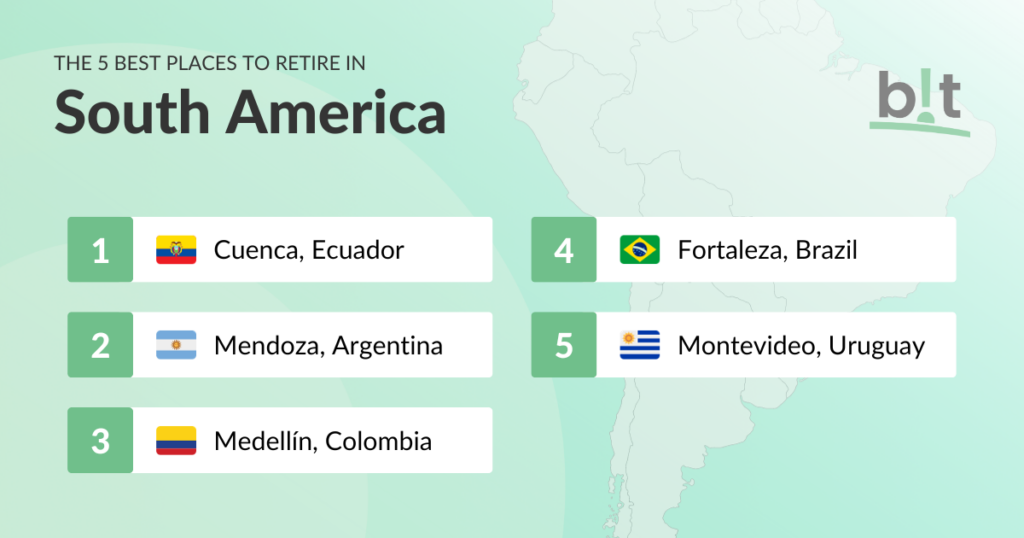
Cuenca, Ecuador
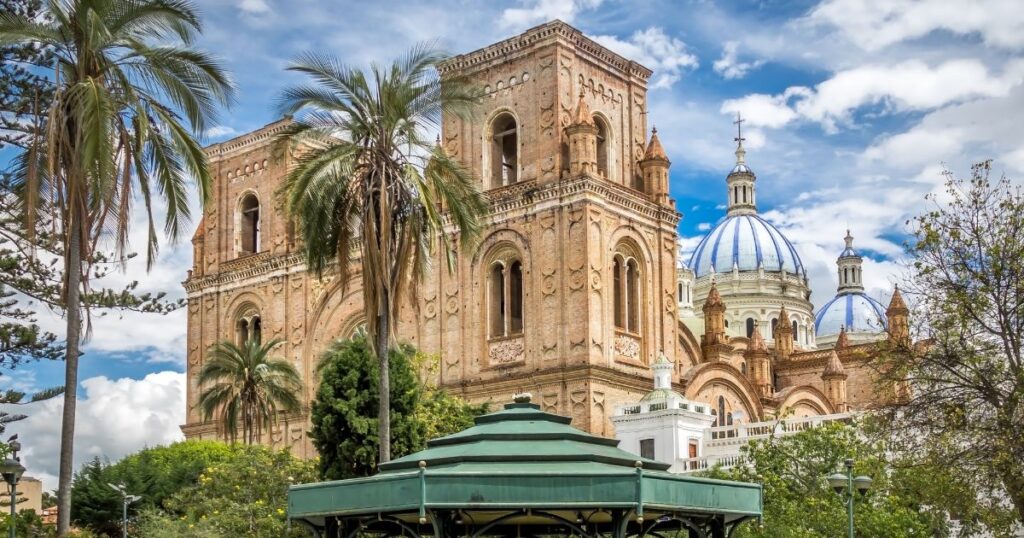
With mild weather year-round, storybook architecture, an affordable cost of living, modern infrastructure, and a low crime rate, it’s no wonder that US expats have made Cuenca the top spot to retire in the country. Add to that the fact that the city is a UNESCO-designated World Heritage site, and including it on our list was a must.
Does Ecuador have a retirement visa?
Yes! Known as the jubilado (retired) visa, Ecuador’s retirement visa initially lasts two years and can be renewed or converted to a permanent residence permit.
To be eligible, you must:
- Earn at least 3x the minimum wage per month in passive income (~$1,475 USD total)
- Extra $250 USD per month for each dependent you bring along
- Have a clean criminal record
- Purchase health insurance for at least your first 90 days in the country1
Important callout on the minimum income required to retire in Ecuador:
Previously, it was possible to retire in Ecuador on $800 per month. However, this is no longer possible due to the increased income requirement, but the new threshold is still quite attainable!
How much does it cost to live in Cuenca?
Here are some average prices for common expenses, according to Numbeo:2
- Monthly rent: ~$423 USD for a 1 BR apartment in the city center
- Utility bills: ~$38 USD per month
- Meal for 2: ~$31 USD for 3 courses at a mid-range restaurant
Quality of healthcare in Ecuador
Healthcare in Ecuador is generally quite good. In fact, it was ranked by Bloomberg as the 20th most efficient healthcare system in the world, above the US.3 It’s especially good in larger cities and places with many tourists and expats — Cuenca, in particular, is known for having many high-quality modern facilities.
Expats may choose from public, private, or nomad insurance. Alternatively, they can pay out of pocket, as costs are generally much lower.
Taxes for US citizens who retire in Ecuador
To say that taxes in Ecuador are favorable for US expats would be an understatement.
While the country doesn’t have an income tax treaty with the US, Ecuadorian tax residents are only subject to taxation on income sourced within the country (at a progressive rate of 0% to 37%).4
A quick note on tax residence:
You’ll see the term “tax resident” used throughout this article. Tax residency is generally established when someone spends 183 days or more in a certain country, although there are other contributing factors. When in doubt, check with your CPA.
US-based passive income (e.g., retirement distributions), would generally be exempt.5
Other common taxes include:
- Capital gains: Generally 10%
- Wealth tax: .15% on those with a net worth of $1,000,000 USD or more
- Remittance tax: 5% on certain international transfers
- VAT: Usually 12%6
Mendoza, Argentina
Mendoza is a mid-size city in the foothills of the Andes and a favorite of US expats. Retirees in Mendoza enjoy sunny weather, great restaurants, spas, and some of the best Malbec wines in the world.
Does Argentina have a retirement visa?
Yes, Argentina’s retirement visa is called the pensionado visa. It initially lasts for one year and can be renewed for up to three years (after that, you must request to become a permanent resident).
To initially qualify for the retirement visa in Argentina, you must:
- Earn at least 5x the minimum wage in passive income per month (about $1,800 USD total)
- Dependents require an additional (but unspecified) amount of income7
- Have a clean criminal record8
How much does it cost to live in Mendoza?
Here are some average prices for common expenses, according to Numbeo:
- Monthly rent: ~$120 USD for a 1 BR apartment in the city center
- Utility bills: ~$34 USD per month
- Meal for 2: ~$27 USD for 3 courses at a mid-range restaurant
A note on Argentina's currency:
The value of the Argentine peso has fluctuated heavily in recent years, so prices may vary significantly from these values.
Quality of healthcare in Argentina
Argentina offers some of the best healthcare in South America,9 with particularly good options in big cities, including Mendoza and Buenos Aires. Most expats choose private insurance, though public and nomad insurance are options as well.
Taxes for US citizens who retire in Argentina
Argentina does not have an income tax treaty with the US and generally places an income tax on tax residents. However, social security payments may be exempt from this because of how that type of income is classified.10
Income is taxed at a progressive rate of 5% to 35%, although certain types of income (dividends, interest, real estate, etc.) are taxed differently.11
Other common taxes include:
- Capital gains: 25-35% on stocks, bonds, & securities; either 13.5% or 15% in most other cases12
- Wealth tax: 0.5% to 0.75% on personal assets (cars, real estate, financial accounts, etc.) exceeding the exempt minimum (~$160,010 USD for primary homes, about ~$31,432 USD for other assets)
- VAT: Usually 21%; reduced rate of 10.5%13
Medellín, Colombia
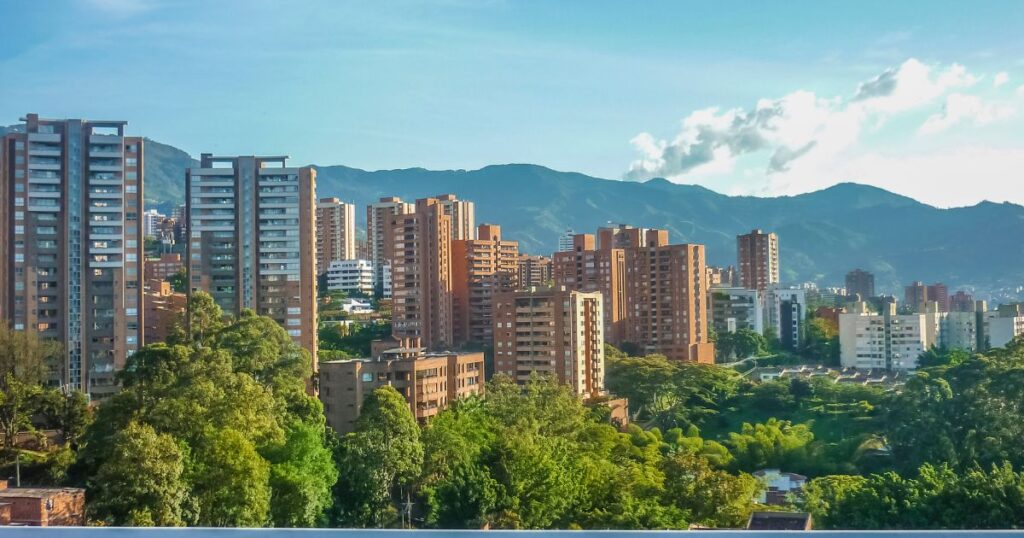
It may come as no surprise that Medellín, dubbed the City of Eternal Spring, has great weather year-round. Medellín boasts both a bustling city and gorgeous landscapes, with a lively culture and innovative spirit.
Does Colombia have a retirement visa?
Yes. Colombia’s pensionado M-visa lasts for three years and can be continually renewed.
To qualify, you must:
- Earn at least 3x the minimum wage per month in passive income (~$740 USD total).14 Passive income is defined as money you don’t actively earn, such as retirement distributions and investment income.
- Dependents require an additional (but unspecified) amount of income
- Have a clean criminal record
- Provide a health certificate
- Provide proof of insurance for their stay in Colombia15
How much does it cost to live in Medellín?
Here are the average prices of some common expenses in Medellín, according to Numbeo:16
- Monthly rent: ~$410 USD for a 1 BR apartment in the city center
- Utility bills: ~$72 USD per month
- Meal for 2: ~$25 USD for 3 courses at a mid-range restaurant
Quality of healthcare in Colombia
Colombia has some of the best healthcare in Central and South America (ranked the 22nd most efficient by the World Health Organization, higher than the US).17
Again, quality and facilities tend to be best around bigger cities, with Medellín in particular known for having excellent options.
Retirees holding the M-visa must purchase private or nomad insurance until they gain permanent residency, which grants access to Colombia’s public healthcare system (EPS). Private insurance plans are affordable, often costing a fraction of U.S. rates, and they typically provide shorter wait times and access to modern facilities.
Taxes for US citizens who retire in Colombia
Colombia does not have an income tax treaty with the US. Colombian tax residents are taxed at a progressive rate of 0% to 39% on their worldwide income. You can exempt up to ~$9,500 USD in retirement/pension income each year.18
Other common taxes include:
- Dividends tax: 35% (if not first taxed at the corporate level; otherwise, 0%)
- Capital gains tax: 15% (if not derived from lottery/gaming/etc. winnings; otherwise, 20%)
- Wealth tax: 0.5% to 1.5% on individuals with more than ~$766,615 USD in net worth
- VAT: Usually 19%; reduced rate of 5%19
Fortaleza, Brazil
Fortaleza, Brazil’s fourth-largest city, may not get as much press as São Paulo or Rio, but it’s got plenty to offer, including lively music and comedy scenes. And with Fortaleza, you don’t have to choose between the beach or the mountains — you’ve got easy access to both.
Does Brazil have a retirement visa?
Yes! VITEM XIV is a temporary visa that lasts up to a year and can be renewed, however, the specificities here are a little murky as this is a newer visa. So, it’s best to confirm that information with an official Brazilian representative when you initially apply.
To be eligible for VITEM XIV, you must:
- Transfer at least $2,000 USD to Brazil bank account each month
- Not specified whether dependents require an additional amount of income
- Have a clean criminal record
- Purchase health insurance20
How much does it cost to live in Fortaleza?
Here are some average prices for common expenses, according to Numbeo:22
- Monthly rent: ~$259 USD for a 1 BR apartment in the city center
- Utility bills: ~$92 USD
- Meal for 2: $29 USD for 3 courses at a mid-range restaurant
Quality of healthcare in Brazil
Brazil has a free, universal healthcare plan that covers everybody. However, quality varies from location to location, with big cities and tourist hubs generally having the best options (even then, though, it can be tough to find an English-speaking provider). Most Americans choose private or nomad insurance.
Taxes for US citizens who retire in Brazil
Brazil does not have an income tax treaty with the US, but as of 2018, there is a Totalization Agreement eliminating the double taxation related to social security income and tax. Brazilian tax residents are taxed on their foreign income at a progressive rate from 0% to 27.5% (lower than the top US tax rate!).23
Other common taxes include:
- Capital gains: Usually 15%
- VAT: 17-20%, depending on location24
Montevideo, Uruguay

Montevideo is the bustling, diverse, and culturally rich capital city of Uruguay. It’s the safest country in South America25 and a major hub for expat retirees. The cost of living is low, but they have a high standard of living, with plenty of great architecture, street art, and restaurants.
Does Uruguay have a retirement visa?
Yes. Uruguay’s pensionado visa allows you to enter the country and apply for permanent residency within six months of your arrival.26 To be eligible, you must:
- Earn at least $1,500 USD per month in passive income e.g., retirement distributions
- Not specified whether dependents require an additional amount of income
- Acquire real estate or purchase Uruguayan public securities valued at $100,000 USD, neither of which can be sold for at least ten years
- Have a clean criminal background record27
How much does it cost to live in Montevideo?
Here are some average prices for common expenses, according to Numbeo:28
- Monthly rent: ~$600 USD for a 1 BR apartment in the city center
- Utility bills: ~$145 USD
- Meal for 2: ~$53 USD for 3 courses at a mid-range restaurant
Quality of healthcare in Uruguay
Uruguay offers high-quality healthcare, with a high ratio of doctors to residents, a variety of different medications available, and easy access to services.29 While they offer a free public health insurance program, many choose a private mutualista plan or nomad insurance.
Taxes for US citizens who retire in Uruguay
Uruguayan tax residents are subject to taxation on their foreign-earned passive income, usually at a flat rate of 12%. There is also a wealth tax on individuals with at least $150,000 USD in net worth, ranging from 0.1% to 0.3%.
Taxes for US citizens who retire abroad
All US citizens and permanent residents — even those living abroad — are subject to taxation on their worldwide income, once they meet the minimum income thresholds.
There are tax breaks that can offer relief for expat retirees, however, such as the:
The Foreign Tax Credit
The Foreign Tax Credit allows US expats to essentially subtract what they have paid in income taxes to a foreign government from what they owe in income taxes to the US government (though as with all things US-tax related, there’s more to it than just that).
Foreign Earned Income Exclusion (FEIE)
The Foreign Earned Income Exclusion allows you to exclude a certain amount of foreign-earned income from taxation ($126,500 for tax year 2024, $130,000 for tax year 2025). There are two tests associated with qualifying for this provision, the Physical Presence Test and the Bona Fide Residence Test.
☝️ Key callout about the FEIE:
The FEIE only applies to earned income. So, if you are moving to South America and fully retire (i.e., not work) then this provision will not impact your US tax filing strategy. However, if you intend to continue working part-time while easing into retirement, it could be beneficial to consult with an expert in US taxes for Americans abroad to design the most tax-efficient strategy for your income.
Foreign Bank Account Report (FBAR)
If you have $10,000 or more in aggregate in foreign bank accounts at any point in the year, you’ll need to report the contents of those accounts to the Financial Crimes Enforcement Network (FinCEN) via FinCEN Report 114.
Additionally, the presence, or lack thereof, of a tax treaty impacts expat tax planning. An important callout that US citizens should be aware of is that none of the countries on this list have tax treaties with the US, but this does not mean retiring in South America spells bad news for your taxes!
Rather, it simply means that it’s in your best financial interest to align with an expert in US expat taxes prior to leaving so that you can ensure your retirement distributions and savings are maximized for you and your lifestyle.
Foreign Account Tax Compliance Act (FATCA)
If you have over $200,000 in foreign assets by the last day of the tax year, or over $300,000 in foreign assets at any point during the tax year, you might be required to file Form 8938.
References
- How to Retire in Ecuador
- Cost of Living in Cuenca
- Where Do You Get the Most for Your Health Care Dollar?
- Ecuador – Individual – Taxes on personal income
- Do Expats Have to Pay Income Taxes in Ecuador on U.S. Social Security Benefits?
- Ecuador – Individual – Other taxes
- DIRECCIÓN NACIONAL DE MIGRACIONES
- Obtener una residencia temporaria como pensionado – No Mercosur
- Health Insurance in Argentina
- Retire in Argentina
- Argentina – Individual – Taxes on personal income
- Argentina – Corporate – Income determination
- Argentina – Individual – Other taxes
- M – Pensionado o rentista
- RETIREMENT VISA IN COLOMBIA
- Colombia Healthcare System
- Colombia – Individual – Taxes on personal income
- Colombia – Individual – Other taxes
- Retirement Visa – Vitem XIV
- Visa for living in Brazil after retirement
- Cost of Living in Fortaleza
- Brazil – Individual – Taxes on personal income
- Brazil – Corporate – Other taxes
- Safest Countries in America 2023
- Beneficio para extranjeros jubilados que obtengan residencia permanente
- Cost of Living in Montevideo
- HEALTHCARE IN URUGUAY: PAVING THE WAY IN SOUTH AMERICA
- Uruguay – Individual – Taxes on personal income
- Uruguay – Individual – Other taxes
Best Place to Retire in South America - FAQ
-
Is Central or South America a better place to retire?
It’s hard to say whether Central or South America is a better place to retire, as it largely depends on personal preferences. Costa Rica and Panama are a couple of popular retirement options in Central America along the Caribbean coast known for being relatively affordable and safe. Ultimately, you should make your decision on where to retire in Latin America based on which locations best align with what you’re looking for in terms of cost of living, healthcare quality, safety, and more.
-
Are US Social Security benefits taxable in South America?
Most South American countries do not tax U.S. Social Security benefits, but you must report them on your U.S. tax return. Exceptions may apply depending on local tax laws.
-
Is it easy to buy property as a foreign retiree in South America?
Yes, most South American countries allow foreigners to buy property without restrictions. However, legal processes vary, so working with a local real estate lawyer is recommended.
-
Are there any wealth taxes in South America?
Yes, countries like Argentina, Colombia, and Uruguay impose wealth taxes on residents with high net worth. Rates and exemptions vary, so consult with a tax expert.
-
Which South American country is safest for retirees?
Uruguay is often considered the safest country in South America, with low crime rates and a stable political environment.
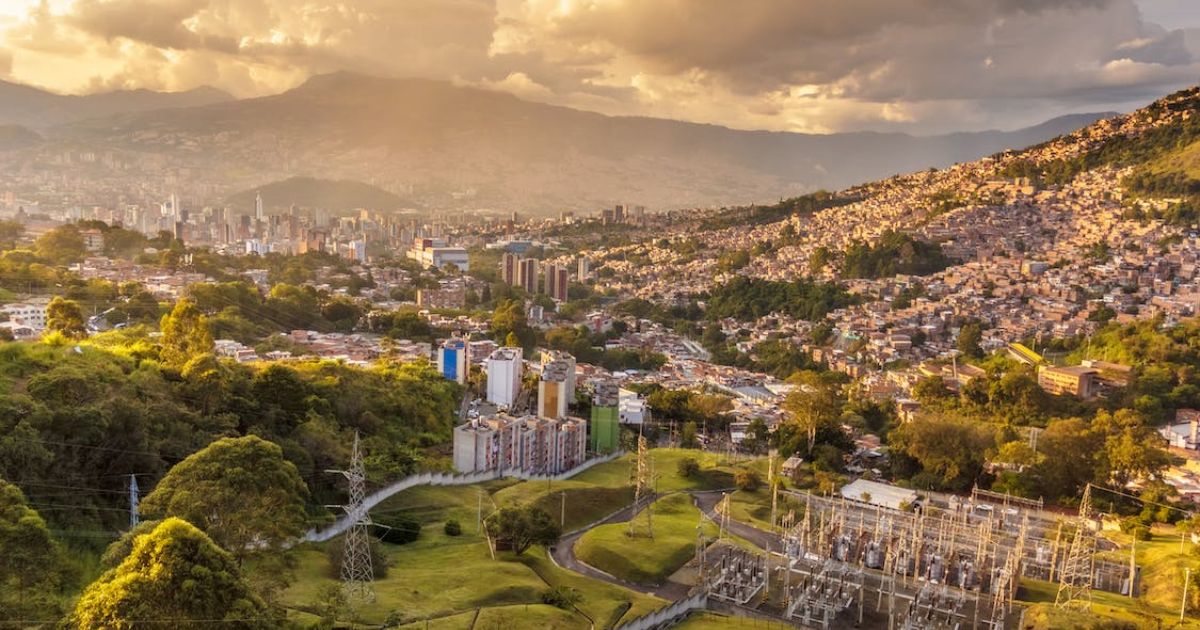
 Connect on LinkedIn
Connect on LinkedIn

